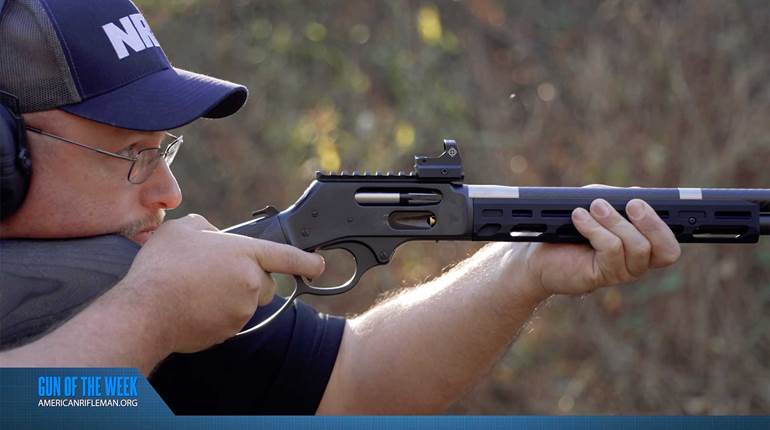On the eve of the American Civil War, there were a number of breechloading carbine designs available on the commercial market, and many were vying for military contracts. One such design was the Maynard carbine, developed by Maryland dentist Dr. Edward Maynard. Watch our "American Rifleman Television" I Have This Old Gun segment above to learn the history of the Maynard and see it in action on the range.
"Dr. Edward Maynard was an interesting chap. He was born in 1813 in Maryland, attended West Point for a short period of time, but he decided it wasn't really for him. He didn't do all that well," American Rifleman Field Editor Garry James said. "So he attended dental college and became one of the preeminent dentists of the 19th century in America. He was interested in lots of different things, and he took out a number of different firearms patents."

One of Dr. Maynard's well-known patents was for the Maynard tape primer, which used a roll of percussion priming tape in lieu of a percussion cap. A door in the side of the receiver retained the priming tape and also contained a gear that advanced the next bubble of priming compound up in line with the percussion nipple when the hammer was cocked. This provided the ignition for the Maynard's unique cartridge.
"It had a self-contained metallic cartridge, to a point," NRA Museums Director Phil Schreier said. "It had just a small hole drilled in the back where the spark from the percussion cap would travel to ignite it. So it didn't really have its own primer. It didn't possess the three Ps, the primer, the propellant and the projectile all in one. But it was pretty neat. Thirty-five and .50-caliber models were made."

Though the Maynard wasn't adopted for military use prior to the outbreak of the Civil War, hundreds of the guns were sold to a number of southern states for use by their state militia. At the outbreak of the war, these gun were then employed by Confederate cavalry troopers.
"The Maynard carbine was a wonderfully simple design, it was wonderfully robust. It worked well, and there were no complaints from anyone regarding its use," American Rifleman Executive Editor Evan Brune said. "It's just that there were a number of designs in contention in the 1850s, and Maynard was a was in tough competition to gain contracts."
Following the establishment of the Confederacy and the firing on Fort Sumter in South Carolina, the federal government found itself in dire need of arms.

"All of a sudden, the Union now is in need of carbines. They want to buy every carbine that they can get their hands on," Brune said. "So Maynard sells a bunch more of these First Model Maynard carbines to the Union, and these are equipped with this tape priming system, but unfortunately, there's a problem that befalls his grand plans. The Massachusetts Arms Company that Maynard contracts his rifle out to has a fire in 1861, and as a result, they can't make any guns, and they're down until the later part of 1863."
Demand for arms was still high once the factory re-started production, though, and thousands of Second Model Maynard carbines were produced for the Union Army until the end of the conflict in 1865.
"After the Civil War, Maynard determined that, you know, this could also be made into a sporting gun," James said. "As a matter of fact, he made some sporting rifles prior to the Civil War as well. So a number of different types of sporting guns, in different calibers, were produced from that period up to about 1890."

The longevity of the Maynard carbine, in all of its forms, is largely due to its simplicity, its robust construction and the ease with which it was adapted to advances in firearm technology and in the development of the self-contained metallic cartridge in particular.
"All in all, a very versatile gun," James said. "And it outlived a lot of its contemporaries."
To watch complete segments of past episodes of American Rifleman TV, go to americanrifleman.org/artv. For all-new episodes of ARTV, tune in Wednesday nights to Outdoor Channel 8:30 p.m. and 11:30 p.m. EST.























